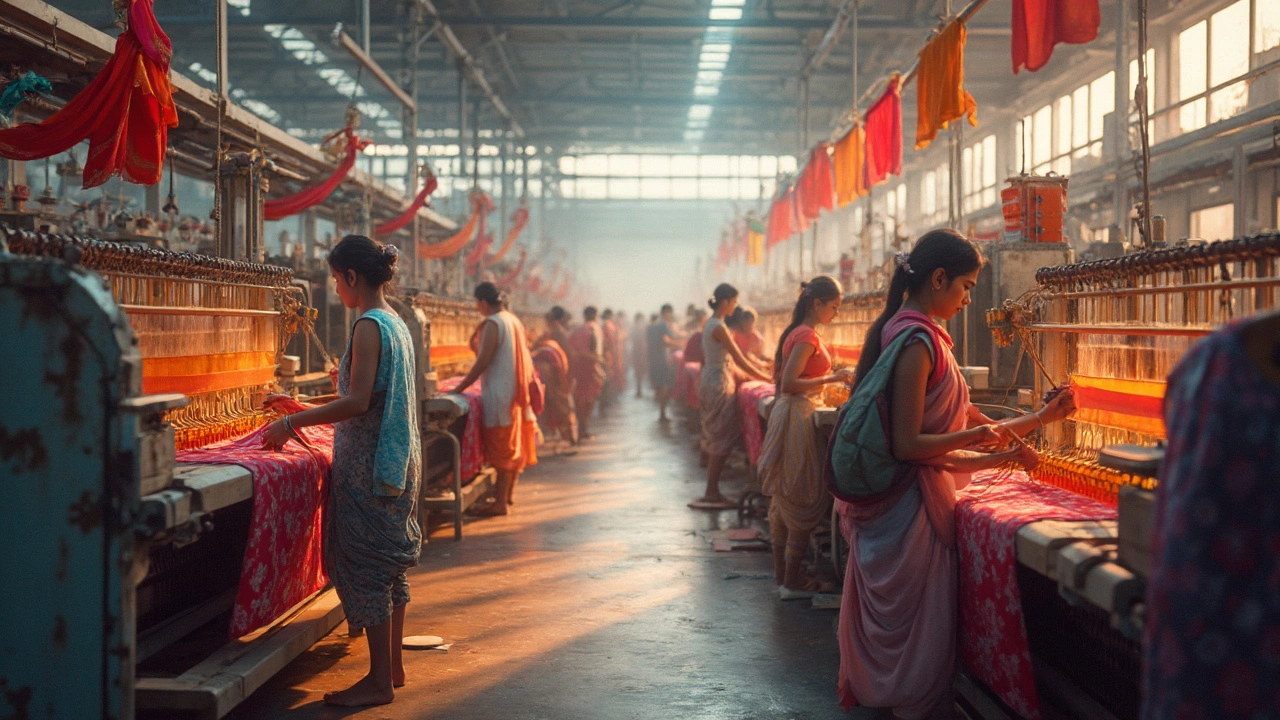India Textiles – Trends, Leaders, and Market Insights
When exploring India textiles, the sector that weaves together raw fiber, factories, and global demand across the sub‑continent. Also known as Indian textile industry, it drives employment, export earnings, and cultural heritage. The industry touches everything from rural hand‑loom villages to high‑tech mills, and it fuels a huge chunk of the nation’s GDP. Below we’ll break down what makes this space tick, who the power players are, and why the numbers keep climbing.
At the heart of the ecosystem lies textile manufacturing, the process that turns raw cotton, silk, and synthetic fibers into fabrics, garments, and home goods. Manufacturing spans small family workshops and sprawling integrated complexes, each contributing to a national output that rivals global giants. The chain starts with yarn spinning, moves through weaving or knitting, and ends with finishing operations like dyeing and printing. Understanding this flow is essential because every bottleneck—whether a shortage of skilled labor or a spike in energy costs—ripples through the whole sector.
Key Players and Market Dynamics
Exports act as the lifeblood of India textiles by connecting local production to worldwide fashion hubs. In FY2023‑24, textile exports crossed $30 billion, with denim, home textiles, and technical fabrics leading the charge. Sustainability is no longer a buzzword; many buyers demand eco‑friendly processes, spurring investments in water‑saving dyeing tech and organic cotton sourcing. This push for greener practices also opens doors for newer entrants who can certify their supply chain, creating fresh competitive edges.
Among the top contenders, Arvind Limited, a leading denim and fabric producer that tops revenue charts in India stands out. Arvind’s diversified portfolio—from traditional cotton fabrics to high‑performance technical textiles—helps it capture a wide market slice. The company’s export‑focused strategy and strong sustainability credentials keep it ahead of rivals like Vardhman and Raymond.
Close on its heels, Reliance Industries, the conglomerate whose textile arm, Reliance Brands, leverages massive scale and integrated supply chains has reshaped the competitive landscape. By tying raw material sourcing, fiber production, and finished goods under one roof, Reliance slashes costs and accelerates time‑to‑market. Its push into synthetic blends and high‑tech fabrics reflects a broader trend of Indian firms moving up the value chain.
Statistically, the sector comprises roughly 4.5 lakh textile manufacturing companies, ranging from tiny home‑based units to massive integrated mills. This sheer volume makes India the world’s second‑largest textile producer after China. Yet, sheer numbers don’t guarantee uniform quality; the industry still faces challenges around standardization, labor up‑skilling, and compliance with global safety norms.
Raw material availability remains a double‑edged sword. While India produces ample cotton, demand often outpaces supply, driving up prices and prompting mills to explore blended fabrics or imported fibers. Meanwhile, synthetic fibers like polyester depend on petrochemical imports, tying the sector’s cost structure to global oil fluctuations. Companies that can balance these inputs through strategic sourcing or backward integration gain a clear advantage.
Technology adoption is accelerating. Automation in yarn winding, AI‑driven quality inspection, and digital supply‑chain platforms are reducing waste and boosting efficiency. Smaller players are also tapping cloud‑based ERP solutions to manage orders and inventory, narrowing the gap with larger firms. As Industry 4.0 tools become affordable, the sector’s overall productivity is set to rise substantially.
Looking ahead, the outlook for India textiles is bullish. Consumer preferences are shifting toward premium, sustainable, and technically enhanced fabrics, creating new profit pools. Government initiatives—such as the Production‑Linked Incentive (PLI) scheme for textile and apparel—offer financial incentives for firms that invest in high‑value manufacturing. Coupled with rising middle‑class spending power, these forces promise steady demand growth through 2030.
All these trends converge to shape a vibrant, fast‑evolving market. In the articles that follow, you’ll find deep dives into the biggest companies, emerging product categories, export strategies, and practical tips for anyone looking to navigate or enter this dynamic space. Let’s explore the wealth of insights that await you.
